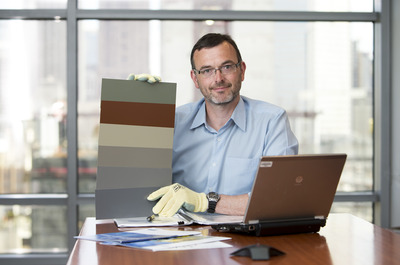Colorbond Steel has reduced environmental impact
Monday, 16 December, 2013
Manufacturing changes made to the latest version of Colorbond steel have produced substantial environmental improvements.
The use of BlueScope’s magnesium-incorporating Activate coating technology as the foundation for Colorbond steel has increased the material’s life span while using fewer metal resources.
BlueScope sustainability manager Richard Rowe said that the company’s efforts to reduce Colorbond steel’s environmental footprint have been rewarded with positive results identified in an independent comparative environmental life cycle assessment (LCA) of roofing for 1000 square metres of commercial or industrial space.

“The LCA results show that the latest version of Colorbond steel outperforms its predecessor consistently in 18 categories, which measure impacts on air, water, land and human health,” Rowe said. “The improvements recorded in the LCA range from a substantial 19.8% reduction in the impact of consumption of non-renewable metal resources, through to a 43% reduction in the impact of chemical emissions to land.” Other noteworthy results from the LCA include a 22.1% reduction in carbon dioxide equivalent emissions, a 28.5% reduction in the impact of chemical emissions on human health, a 22.6% reduction in the impact of consumption of non-renewable fossil fuel resources and a 34.8% reduction in the use of fresh water.
The LCA concluded the reduction in environmental impact is the result of innovation in the metal coating formulation on the new Colorbond steel substrate, which delivers an increased life span while using fewer metal resources. Adding to the environmental benefits of Colorbond steel is its use of Thermatech technology, which can reduce the amount of heat entering a building through the roof.^
Thermatech can be an effective way to reduce a building’s energy load through less reliance on air conditioning to maintain a comfortable internal temperature; potentially saving occupants money on air-conditioning costs as well as potentially reducing emissions from electricity generation.^
Rowe said that environmental considerations are becoming increasingly important in the construction of new buildings, and Colorbond steel is ideal for creating buildings which satisfy environmental rating tool requirements such as the Green Building Council of Australia’s Green Star program. “Colorbond steel contributes towards satisfying the steel materials credit (MAT-6) across Green Star rating tools,” he said.
“Additionally Colorbond steel roofs made from Classic Cream and Surfmist may also contribute towards satisfying the Environmental Category Credit (ENV-3) Heat Island Effect in the Green Star Communities tool.
“This credit aims to mitigate the problem of cities and urban areas being warmer than their surrounding rural or undeveloped areas by reducing the amount of solar radiation, or heat, absorbed by a building and its surrounds.
“New Colorbond steel is still 100% recyclable and manufactured by a responsible steelmaker, BlueScope, with the benefit of being more environmentally sustainable than its predecessor.”
Rethinking IT sustainability
As businesses rethink how they manage their IT infrastructure, embedding sustainability into...
Emissions as data: the challenge of reporting on an invisible metric
The challenge many businesses face is quite apparent: how does one measure emissions? AVEVA says...
The 3 key risks directors need to manage amid climate reporting uncertainty
2025 will be a marker year for climate reporting, and boards should devote attention to three key...










